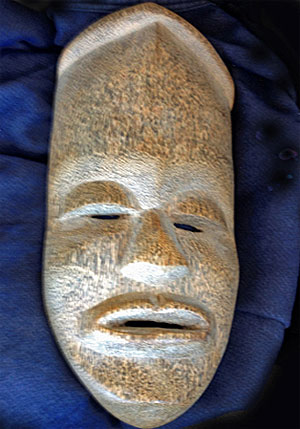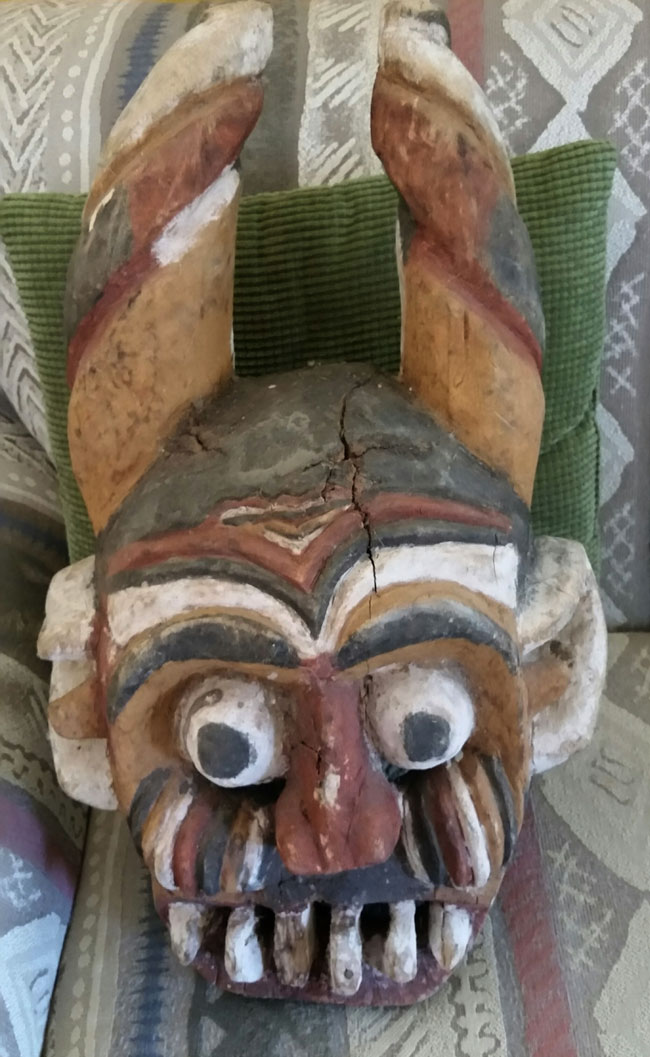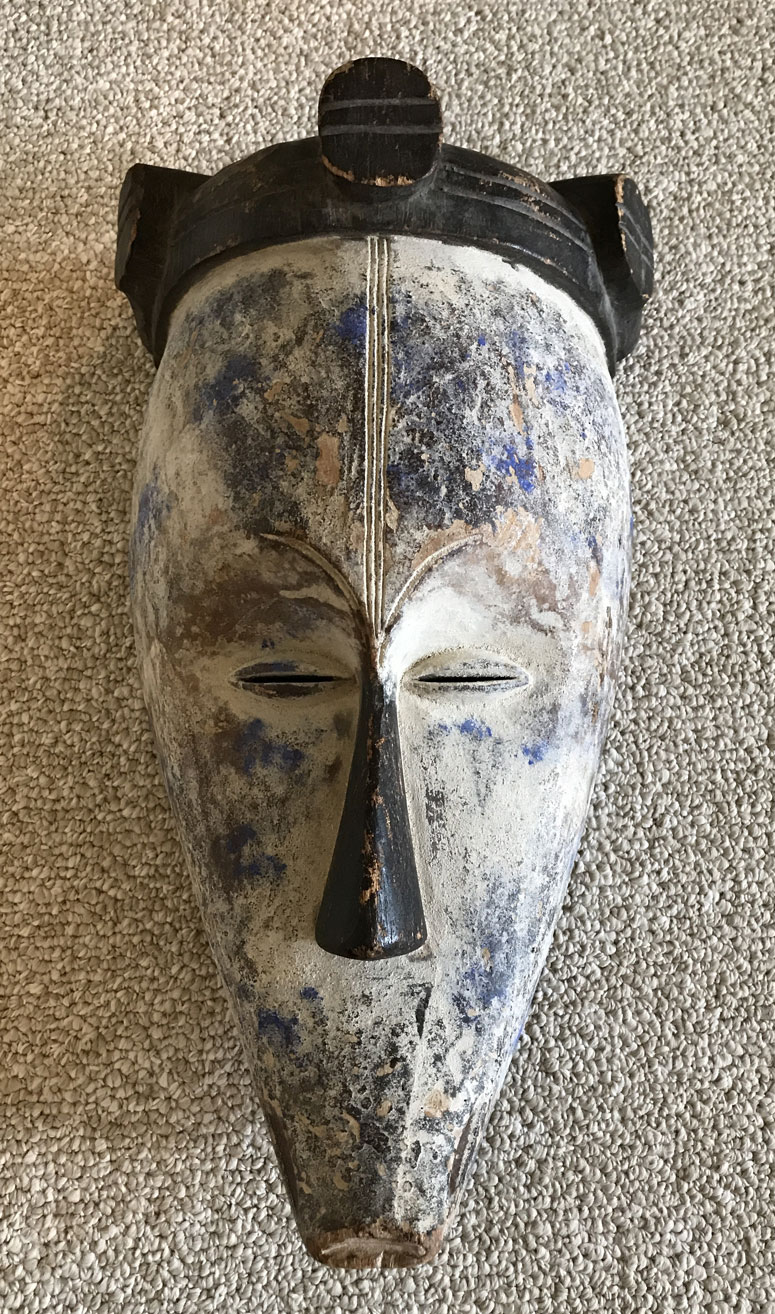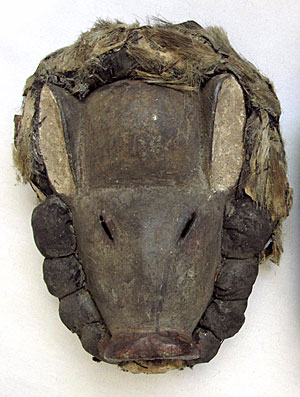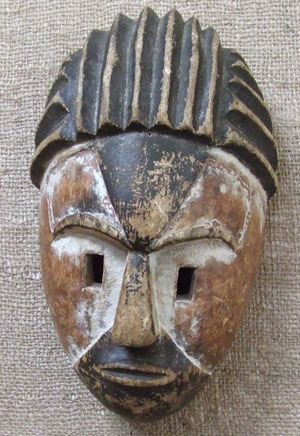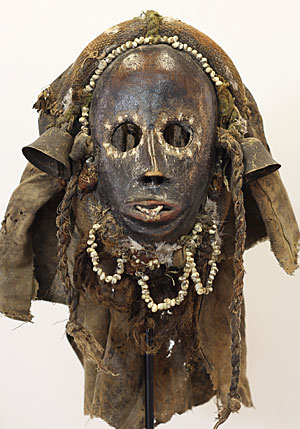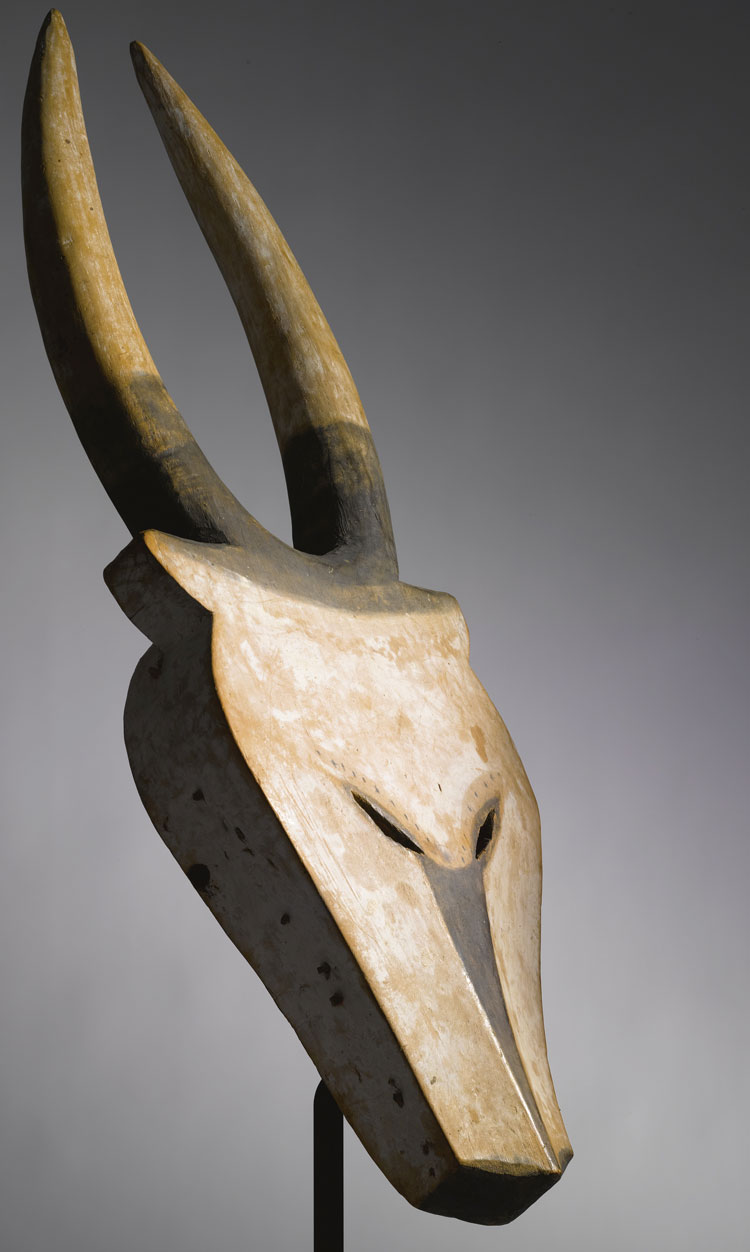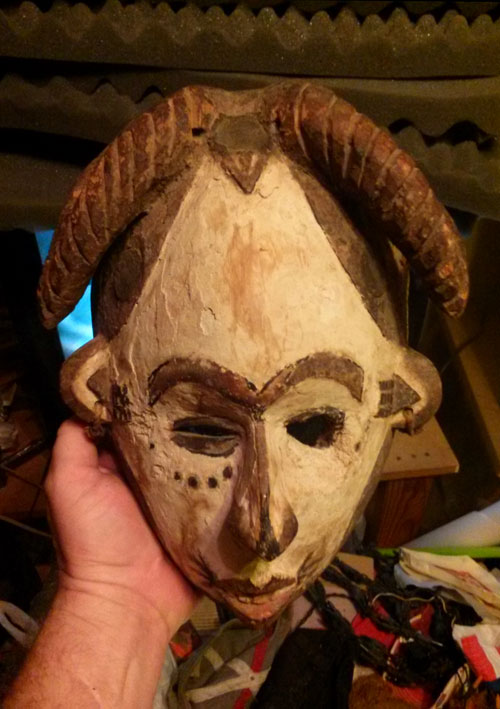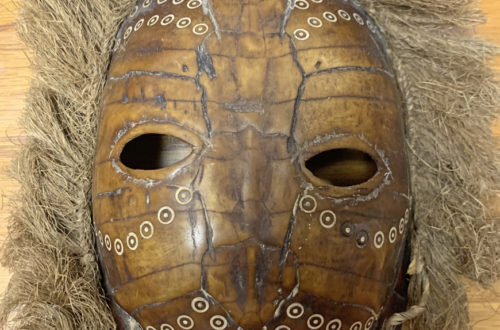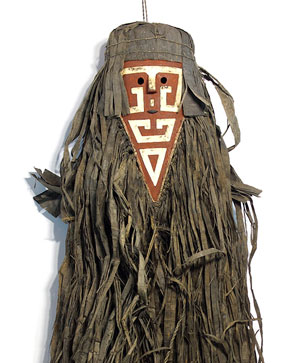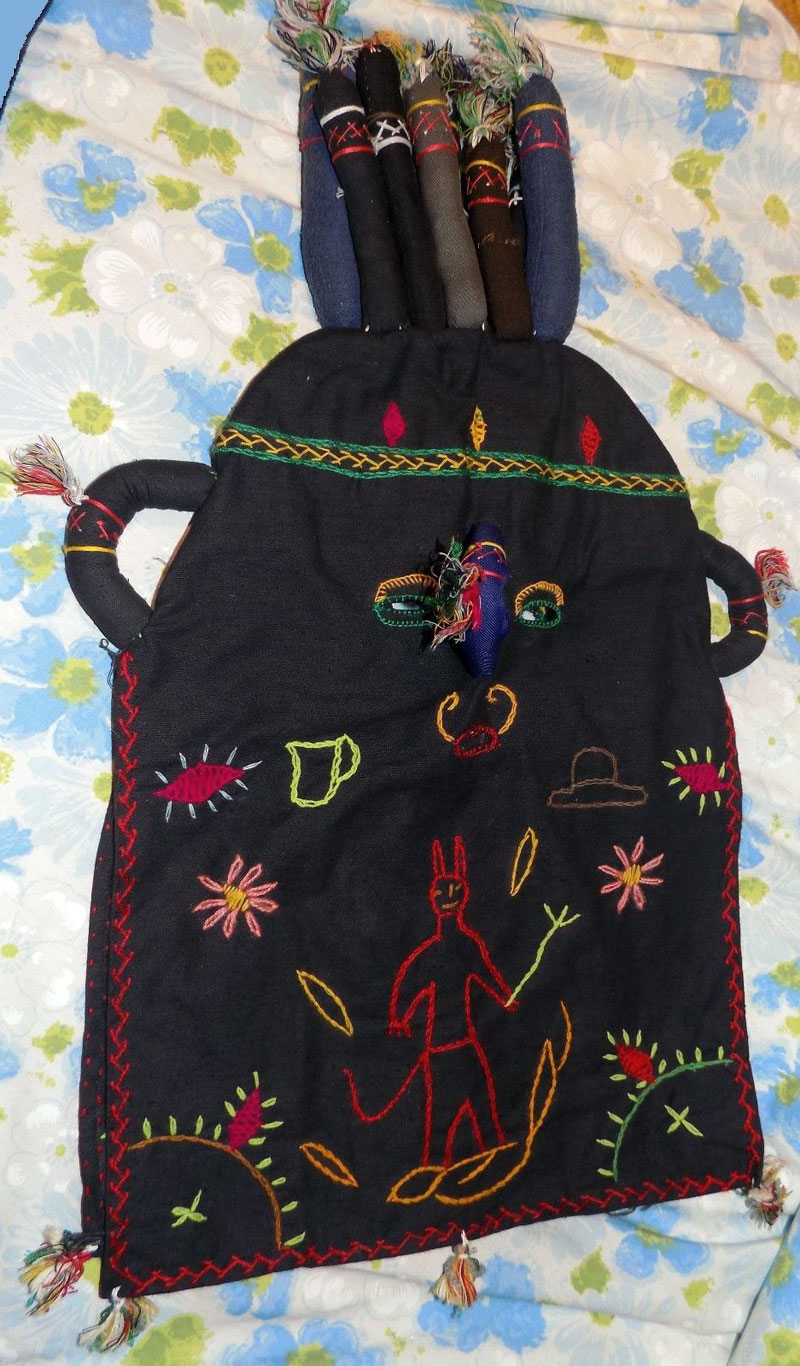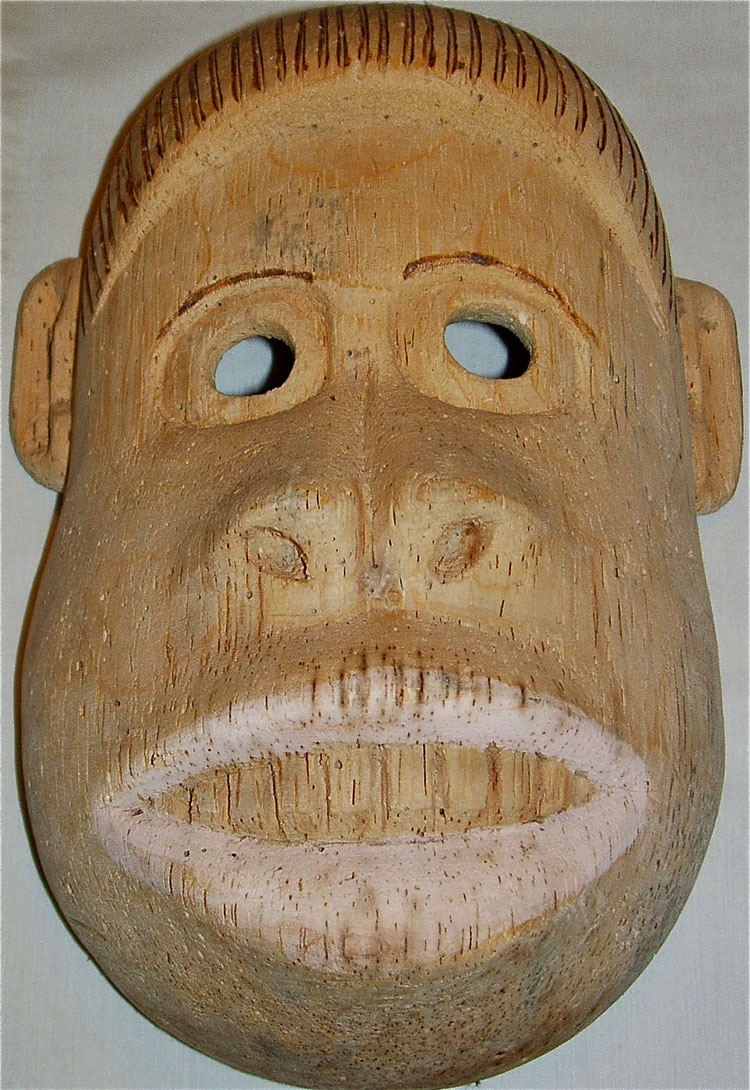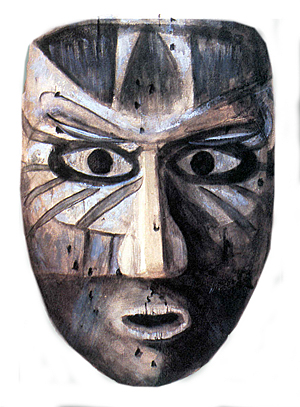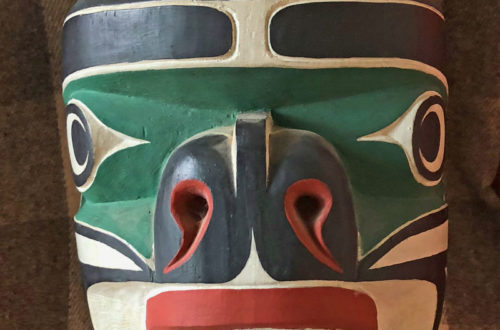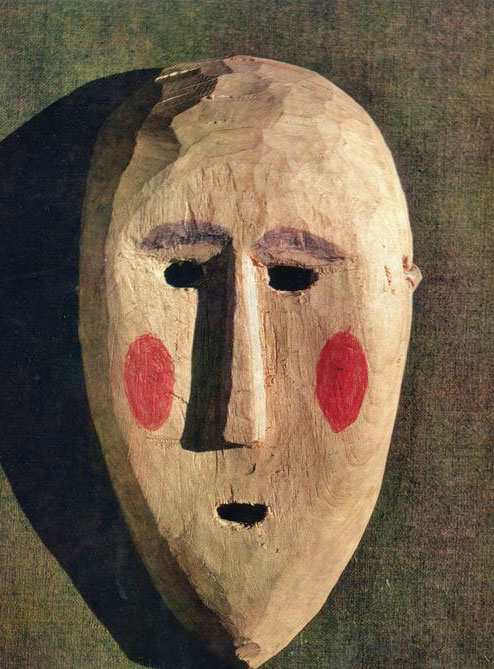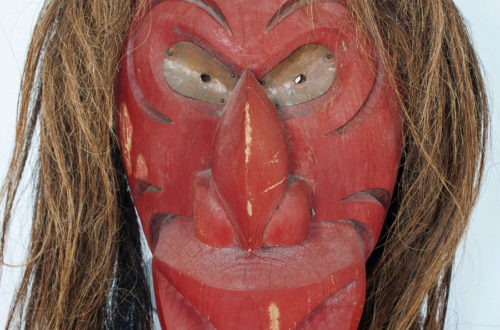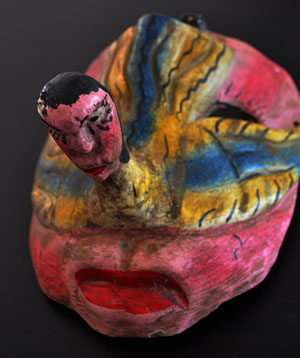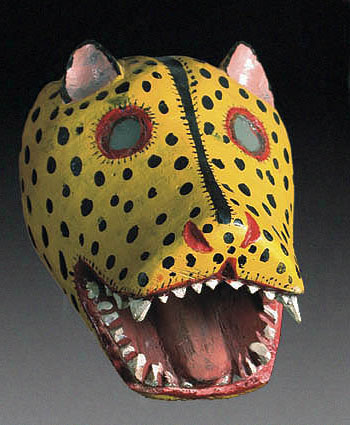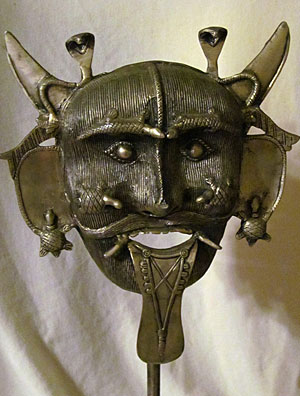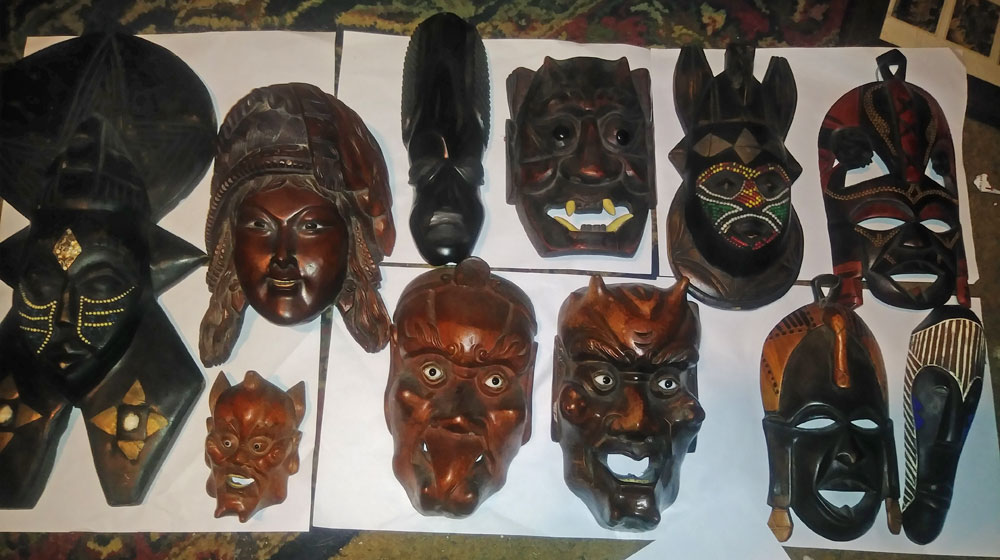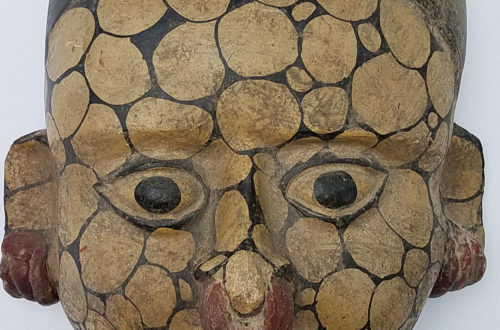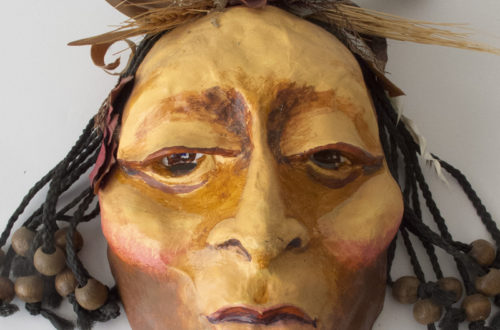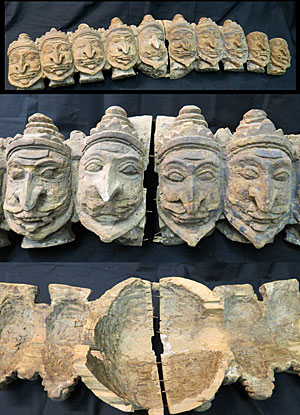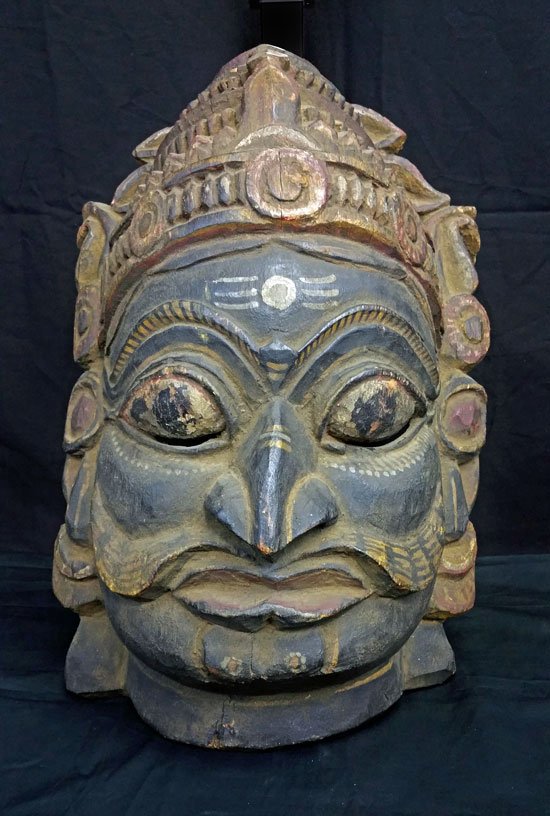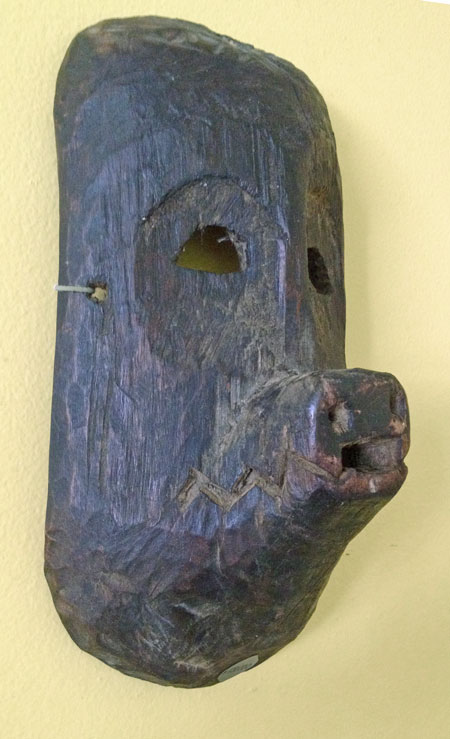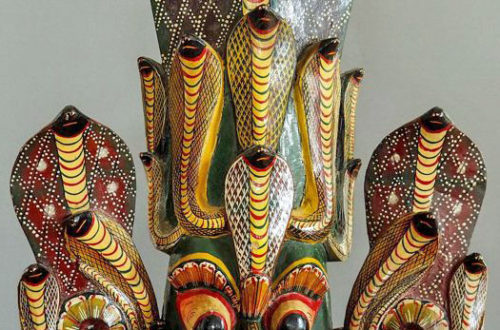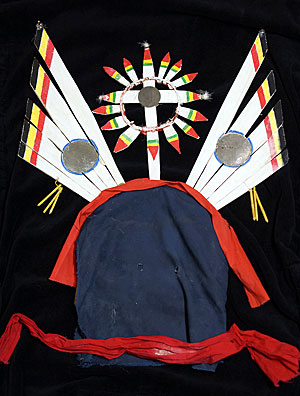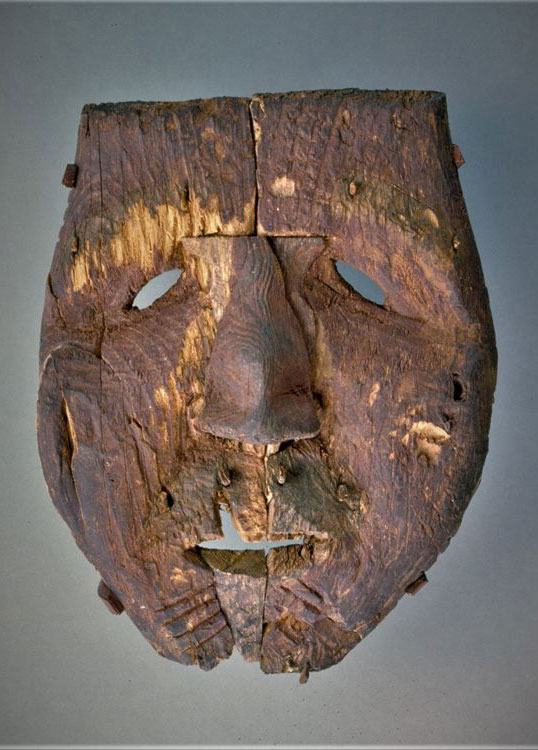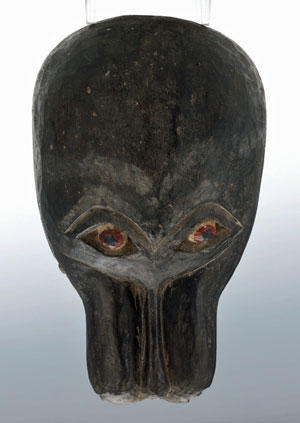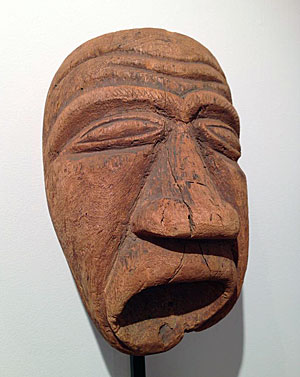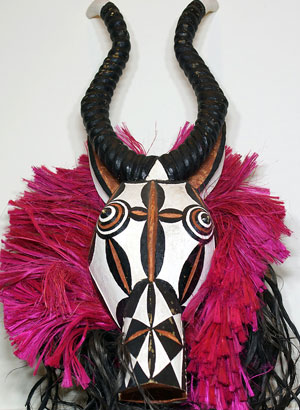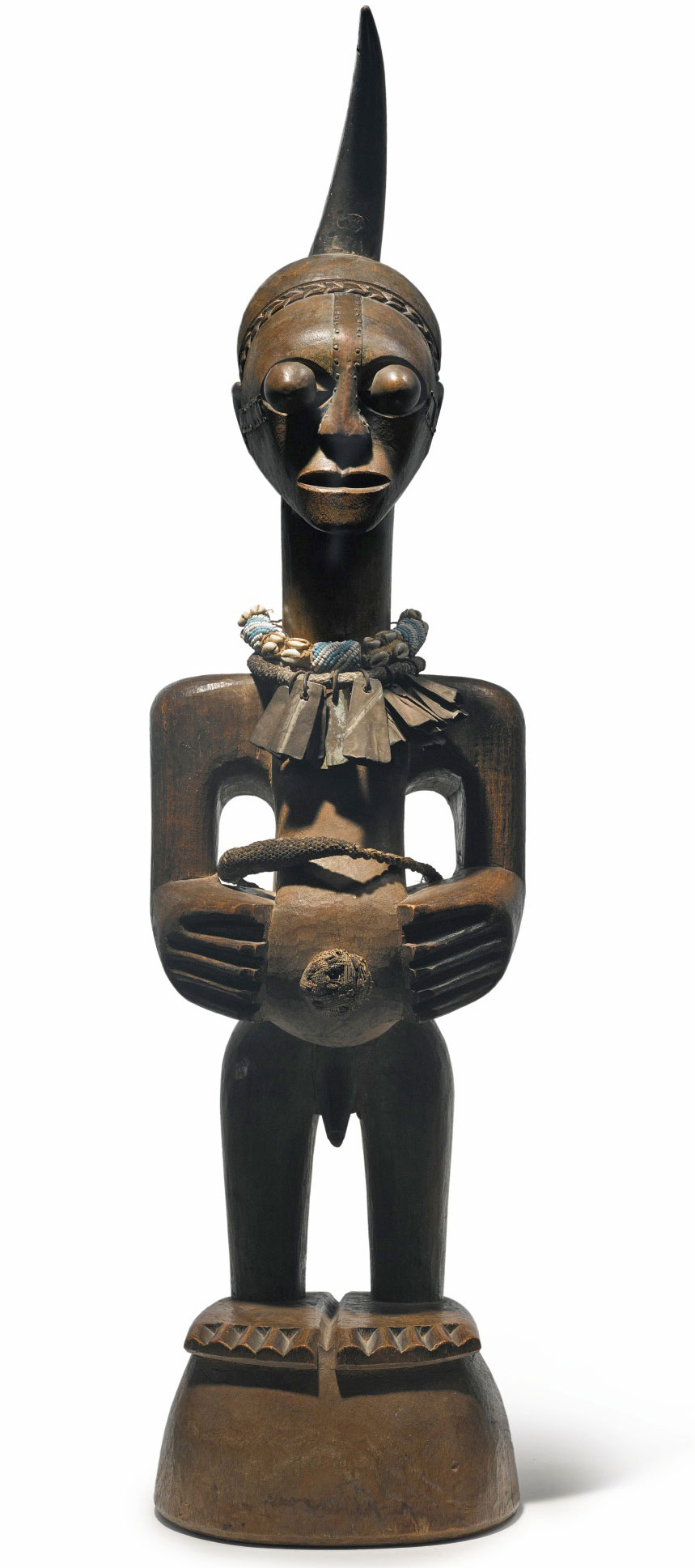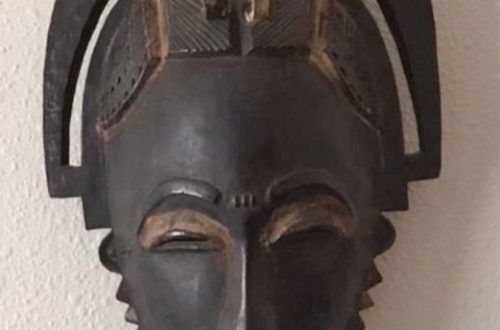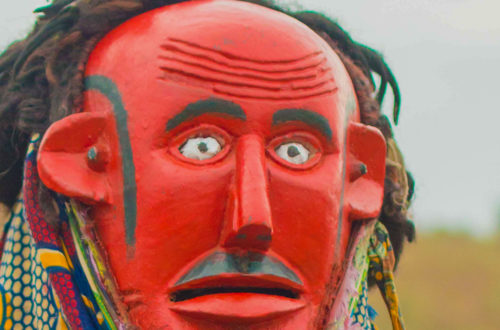Q: I have mask that my grandparents got in Africa and just want some information like where in Africa it came from and just what it is. Chrisitna, 551 A: This unpainted, wooden mask may have come from Africa, but it is not associated with any cultural tradition I am aware of.
-
-
A fine West African pig
Q: It has (or had) feathers around the top of it, and it has black mesh ‘balls’ around the perimeter of the face. The mesh is stuffed with something, although I don’t know with what. Can you tell me which tribe, area of Africa, and what type mask it is? Also if it would have any value or rarity? Diane, 550 A: I’ve seen pig masks from several different West African countries, but a good guess is the Chokwe people of Angola.
-
Famous mask in a strange size
Q: I’ve been collecting masks for a few years and recently acquired an auction lot of W. African masks from a local small auction house that usually has junk, antique tools and farm equipment. I have details of them (and sketches) in a notebook with dates between 1950 – 1990. I’m really fascinated by them and would like to get your opinion. This mask is tiny. The wooden face part is 5″ tall. Adam, 549 A: Nice Gunye ge mask from the Dan culture of Liberia or Ivory Coast.
-
Art from the Amazon jungles
Q: I visited the Canaima area of Venezuela in March 1991 and not far from the airstrip I bought the attached mask in a small village. I was told it was a monkey spirit mask and was used for a ‘wedding type ceremony’ by the Pemon Indians. This was one of two masks (the other being a real monkey skull) made of reed covered in a plaster, straw hair and real monkey teeth.The mask looked used when purchased. Paul, 458 A: That is a handsome piece, and a bit different from the similarly constructed masks of the nearby Piaroa-Huarime people.
-
Can you identify this mask?
Q: I just discovered this interesting tribal mask. Do you know what it is? Let’s reverse roles and ask you for your opinion. Hints: the mask is carved wood and very old. Once there are a few comments I’ll tell you the whole story about this important piece. A: Write as much as you want
-
Far out Mexican decorative
Q: Today I purchased this mask and I need help to figure out the origin. The human bird like character reminds me of Mark Chagall and his mythical naïve world. Technical elements: carved wood, with fabric on top and painted plaster. Can you tell me your opinion about this item? Adrian, 546 A: This little guy is what collectors of Mexican masks call a decorative. You can see some of them at the bottom of my Mexico page.
-
Stunning art, but not a mask
Q: I think this is bronze. Can’t find it anywhere on the net. The Cobras on the forehead and the turtles on the ears caught our attention as well as the symbols on the base. Jim, 9-11-13 A: It is a very appealing bronze sculpture. From where, I do not know.
-
Famous 10-headed King Ravana
Q: This is a Ravana mask that I have been trying to find more info on. I believe it could be pre-1800. I bought it from a good dealer friend who thinks the same age. 45 inches wide, it was cut in half at some point. I really enjoy this great mask. Josh, 545 A: There is a cheap plastic version of this famous mask on this site. It says “This ten-headed mask represents the Asura (Sanskrit for demon) king Ravana, from the Hindu epic Ramayana.
-
I’ve never seen an Apache Ga’an
Q: This is a Ga’an (mountain spirit) mask used in the 1970s and 1980s, probably by the Western Apache, Diné, or Chiricahua peoples. It was acquired from the tribe by a Hollywood studio for use in shooting the movie “Geronimo” (1993), and I bought it from someone who used to work for the studio and was given it as a present. It appears it once had feathers attached to the tips of the wood. Incidentally, the first Geronimo movie (1952) also had Ga’an dancers in it. Aaron, 543 A: I normally post only one mask per person,
-
Why are real African masks so hard to find?
Q: I bought this Gurunsi antelope mask from a dealer in Ougudougou. It was in perfect condition and the price was fair. Aaron, 542 A: Once again I’m impressed by your ability to pick out excellent additions to a wonderful mask collection. This one is a perfect example of what the Gurunsi people of southern Burkina Faso would actually use in a ritual dance.
